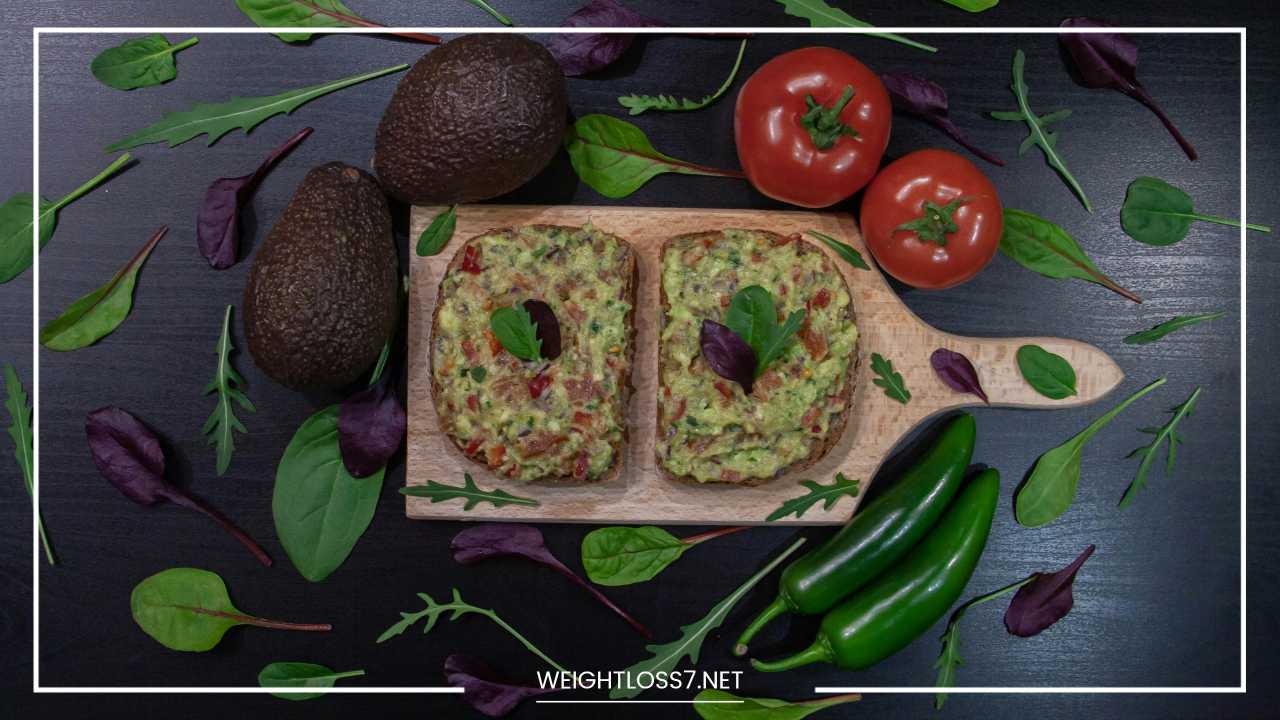Diet to Lose Weight

Diet to Lose Weight
The Comprehensive Guide to a Diet for Sustainable Weight Loss
Embarking on a journey to lose weight is a powerful and often life-changing decision, driven by a desire for better health, higher energy levels, and a more confident self. While exercise and lifestyle choices play essential roles, the foundation of successful and sustainable weight loss lies in one key area: your diet.
Unfortunately, with the overwhelming flood of advice, fad diets, and conflicting opinions online, it can be challenging to know where to start or what truly works.
This comprehensive guide is here to simplify the process, breaking down the science of weight loss and offering practical, evidence-based strategies to help you achieve long-term success.
Understanding the Fundamentals: The Science of Weight Loss
At its core, weight loss is based on a simple concept: creating a calorie deficit—that is, consistently consuming fewer calories than your body burns over time.
Your body expends calories in several ways: through basal metabolic functions (like breathing and maintaining organ function), daily activities, exercise, and even digesting food.
When calorie intake falls below what your body requires, it begins to use stored fat for energy, resulting in gradual weight loss.
However, sustainable weight loss is about more than just counting calories. Several internal and external factors influence how your body responds to diet and weight loss efforts:
- Metabolism: This refers to the rate at which your body burns calories. It’s influenced by factors such as age, sex, muscle mass, and genetics. While you can’t drastically alter your metabolism, increasing lean muscle through strength training can help raise your daily calorie burn.
- Hormonal Balance: Hormones like insulin (blood sugar regulation), leptin (satiety), and ghrelin (hunger) all affect appetite and fat storage. Imbalances can make weight loss more difficult and increase cravings.
- Genetics: While not destiny, your genetic makeup can influence your body’s tendency to gain or lose weight, and how it responds to specific dietary approaches.
- Lifestyle Factors: Stress, sleep quality, hydration, and activity levels all significantly impact weight loss. Chronic stress and poor sleep can disrupt hormones, increase appetite, and hinder progress.
Ultimately, an effective weight loss diet focuses not just on reducing calories, but on nourishing your body, stabilizing hunger, and building habits you can maintain for the long term.
The key to lasting change is personalization—finding a dietary approach that aligns with your lifestyle, preferences, and health goals.
Key Principles of a Healthy Weight Loss Diet
When it comes to losing weight in a healthy and sustainable way, there’s no one-size-fits-all solution. However, certain core principles apply across most effective dietary strategies.
These principles not only promote weight loss but also support overall health, energy, and well-being—making them crucial components of any long-term approach to healthy living.
1. Emphasize Whole, Minimally Processed Foods
The foundation of any healthy weight loss diet should be whole, minimally processed foods. These include fruits, vegetables, legumes, whole grains, lean proteins, and healthy fats.
Whole foods are typically more nutrient-dense, meaning they provide more vitamins, minerals, and fiber per calorie compared to processed alternatives.
They also tend to be more satiating, helping you feel full on fewer calories. Processed foods, by contrast, are often high in refined sugars, unhealthy fats, sodium, and empty calories—factors that can undermine weight loss and negatively affect your health.
2. Fill Your Plate with Fruits and Vegetables
Fruits and vegetables should play a starring role in your daily meals. Rich in fiber, antioxidants, and essential nutrients, they promote satiety and support metabolic health.
Because they are low in calories and high in volume, they help you eat more without overeating. A good rule of thumb is to aim for half your plate to be filled with colorful vegetables and fruits at each meal. The diversity of colors usually reflects a variety of nutrients and phytochemicals that benefit the body.
3. Prioritize Lean Protein
Protein is a critical macronutrient for weight loss. It helps preserve muscle mass, especially during calorie restriction, and enhances satiety, keeping hunger at bay.
Choose lean sources such as skinless poultry, fish, eggs, low-fat dairy, legumes, tofu, tempeh, and lean cuts of beef or pork. Including a source of protein with every meal can help regulate your appetite and curb unnecessary snacking.
4. Opt for Whole Grains
Unlike refined grains, whole grains retain their bran and germ, which are rich in fiber, B vitamins, and other essential nutrients.
Foods like brown rice, oats, quinoa, barley, and whole-wheat products support digestion, stabilize blood sugar levels, and keep you feeling full longer.
Swapping white bread, white rice, and sugary cereals for their whole-grain counterparts is a small change that can make a big difference in your weight loss efforts.
5. Incorporate Healthy Fats Wisely
Not all fats are created equal. While trans fats and excessive saturated fats can harm your health, healthy fats—such as those found in avocados, nuts, seeds, olive oil, and fatty fish—are essential for hormone function, brain health, and satiety.
Fats are calorie-dense, so moderation is key, but don’t shy away from including them in your meals. They can help make your food more satisfying and delicious, which supports long-term dietary adherence.
6. Practice Portion Control
Even healthy foods can contribute to weight gain if eaten in large quantities. Learning to recognize appropriate portion sizes and listening to your body’s natural hunger and fullness cues are essential skills for weight management.
Use smaller plates, avoid eating straight from packages, and try to eat mindfully—paying attention to the flavors and textures of your food rather than multitasking during meals.
7. Stay Well Hydrated
Water plays a vital role in nearly every bodily function, including metabolism, digestion, and appetite regulation. Sometimes, we mistake thirst for hunger, leading to unnecessary snacking.
Drinking water before meals can help reduce calorie intake, and substituting sugary drinks with water can make a significant difference over time. Aim for at least 8 cups (2 liters) per day, more if you’re active or in a hot climate.
8. Minimize Processed Foods, Added Sugars, and Unhealthy Fats
Highly processed foods are often loaded with added sugars, sodium, refined carbohydrates, and unhealthy fats.
These contribute to weight gain, inflammation, and chronic diseases. Limit foods like sugary beverages, fast food, packaged snacks, and fried items.
Also, watch for hidden sugars in products like sauces, dressings, and flavored yogurts. Choosing whole, fresh ingredients whenever possible helps you stay in control of what you’re putting into your body.
Exploring Popular Weight Loss Diet Approaches
While the core principles of healthy weight loss remain constant—like creating a calorie deficit, eating nutrient-dense foods, and maintaining consistency—many structured dietary approaches have gained popularity for helping people achieve their goals.
Each method has its own strengths, challenges, and suitability depending on individual preferences, health conditions, and lifestyles. Here’s an overview of some of the most widely practiced weight loss diets and how they work:
1. Low-Carb Diets (e.g., Keto, Atkins)
Low-carbohydrate diets involve significantly reducing your intake of carbohydrates—especially refined carbs and sugars—while increasing protein and fat.
The ketogenic (keto) diet, in particular, aims to push the body into ketosis, a metabolic state where it burns fat for fuel instead of carbs. This can result in rapid weight loss, especially in the early stages due to water loss and appetite suppression.
However, low-carb diets can be quite restrictive, often eliminating many fruits, whole grains, and legumes.
Some people may experience side effects like the “keto flu” (fatigue, headache, irritability), constipation, and nutrient deficiencies if the diet isn’t carefully balanced. Additionally, long-term adherence can be challenging for many due to the limited food choices.
2. Mediterranean Diet
The Mediterranean diet is often praised as one of the healthiest and most sustainable eating patterns.
It emphasizes whole, plant-based foods like vegetables, fruits, legumes, whole grains, nuts, and olive oil, along with moderate amounts of fish, poultry, and dairy. Red meat and processed foods are limited.
Unlike restrictive diets, the Mediterranean approach is more about a lifestyle shift than strict rules. It’s not only effective for weight loss but has also been linked to lower risks of heart disease, stroke, diabetes, and cognitive decline.
Its flexibility and focus on flavor-rich, satisfying foods make it one of the easiest diets to stick with long term.
3. Intermittent Fasting (IF)
Intermittent fasting is not a diet in the traditional sense, but rather an eating schedule. Common methods include the 16:8 method (fasting for 16 hours and eating during an 8-hour window) and the 5:2 method (eating normally five days a week and significantly reducing calories on two days).
IF may help reduce overall calorie intake and improve insulin sensitivity, which can support weight loss and metabolic health.
However, it may not be ideal for everyone—especially those with a history of eating disorders, certain medical conditions, or those who struggle with energy dips during fasting periods.
4. Plant-Based Diets (Vegan, Vegetarian)
Plant-based diets, including vegan and vegetarian approaches, emphasize foods derived from plants: vegetables, fruits, legumes, nuts, seeds, and whole grains. Vegan diets exclude all animal products, while vegetarians may include dairy and eggs.
These diets are generally high in fiber, antioxidants, and phytonutrients, and can be naturally lower in calories, which may lead to weight loss.
However, careful planning is essential to avoid nutritional deficiencies, particularly in vitamin B12, iron, zinc, and omega-3 fatty acids. When done well, plant-based eating can be both ethical and health-promoting.
5. Volumetrics Diet
The Volumetrics diet focuses on foods that are low in calorie density but high in volume—like broth-based soups, vegetables, fruits, and whole grains. The idea is to help you feel full and satisfied while consuming fewer calories.
Rather than cutting out entire food groups, Volumetrics encourages smarter food choices and mindful eating, making it a highly sustainable option.
It’s especially effective for people who prefer eating larger portions and want to avoid constant hunger while losing weight.
6. Weight Watchers (WW)
WW is a commercial weight loss program that uses a points-based system to help users track their food intake.
Each food is assigned a point value based on calories, sugar, fat, and protein. Members are given daily and weekly point budgets and encouraged to stay within them.
One of WW’s strengths is its flexibility—you can eat any food as long as you track it. It also provides community support, coaching, and habit-building strategies, which can be critical for long-term success. It’s particularly effective for those who thrive with structure and accountability.
7. Noom
Noom is a digital weight loss program that blends food tracking with behavior change psychology.
Users log their meals, track weight and activity, and receive daily lessons on habits, triggers, and mindset. Foods are categorized by color (green, yellow, red) to guide healthier choices.
Noom focuses less on restriction and more on understanding the why behind eating behaviors.
This can be especially helpful for emotional eaters or those looking to develop a healthier relationship with food. It requires consistent app use but can be highly effective for tech-savvy users seeking a personalized, holistic approach.
Creating Your Personalized Weight Loss Plan
When it comes to achieving lasting weight loss, there’s no universal formula. The most effective approach is one that fits seamlessly into your life—supporting your physical health, mental well-being, and personal preferences.
Creating a personalized weight loss plan allows you to take control of your journey and build habits that are both effective and sustainable. Here’s a step-by-step guide to help you design a plan that works for you.
1. Set Realistic, Achievable Goals
Start by setting specific, measurable, and realistic goals. A healthy and sustainable rate of weight loss is about 1–2 pounds per week.
Focus not just on the number on the scale, but also on non-scale victories like improved energy, better sleep, or fitting into your favorite jeans. Remember: this is a marathon, not a sprint.
2. Understand Your Starting Point
Spend at least a week tracking your eating habits with a food journal or app. Write down what you eat, portion sizes, when you eat, and how you feel before and after meals.
This helps identify emotional eating triggers, nutrient gaps, and patterns like late-night snacking or meal skipping.
3. Calculate Your Calorie and Nutrient Needs
Understanding your body’s energy requirements is essential. Use an online TDEE (Total Daily Energy Expenditure) calculator or consult a registered dietitian to determine your baseline needs.
To lose weight, create a calorie deficit of about 500–750 calories per day, which typically results in losing 1–1.5 pounds per week. Don’t go too low—undereating can slow your metabolism and lead to fatigue or nutrient deficiencies.
4. Choose a Dietary Strategy That Fits Your Lifestyle
Look at the various dietary approaches—Mediterranean, low-carb, plant-based, intermittent fasting—and consider what suits your taste preferences, schedule, and ethical values. You don’t need to follow one plan rigidly; a flexible, hybrid approach often works best.
For example, you might combine the whole-food focus of the Mediterranean diet with the structure of intermittent fasting.
5. Prioritize Nutrient-Dense, Whole Foods
Base your meals around vegetables, fruits, lean proteins, whole grains, and healthy fats. These foods not only support weight loss but also provide the nutrients your body needs to function optimally.
Avoid ultra-processed snacks and sugary beverages, which can derail your efforts without providing lasting satisfaction.
6. Plan Ahead for Success
Meal planning is a game changer. Prepare a weekly menu, make a grocery list, and batch-cook meals when possible.
Having healthy snacks and pre-portioned meals on hand helps you avoid impulsive choices and saves time during busy days.
7. Master Portion Control
Use measuring cups, food scales, or visual cues (like a deck of cards for protein or a cupped hand for carbs) to learn appropriate portion sizes.
Over time, this helps retrain your eyes and appetite. Eating slowly and mindfully also helps you recognize when you’re truly full.
8. Start Small and Build Momentum
Trying to change everything at once is overwhelming and usually unsustainable. Begin with one or two small changes, such as drinking more water or adding a serving of vegetables to each meal. As these become habits, build on them gradually.
9. Find Healthier Swaps You Enjoy
Identify your favorite comfort foods and find healthier versions. Love ice cream? Try a Greek yogurt parfait with fruit.
Crave chips? Air-popped popcorn or roasted chickpeas might do the trick. These swaps satisfy cravings without sabotaging progress.
10. Allow Flexibility and Enjoy Treats in Moderation
Deprivation often leads to bingeing. Allow room for your favorite indulgences—just not every day. Practice the 80/20 rule: eat nutrient-rich foods 80% of the time and enjoy treats in moderation the other 20%.
11. Tune Into Your Body
Learn to trust your body’s natural signals. Eat when you’re hungry, stop when you’re satisfied—not stuffed. Mindful eating helps reduce overeating and makes your meals more enjoyable.
12. Track Your Progress—Beyond the Scale
Weigh yourself once or twice a week, but also monitor other indicators like energy levels, mood, how your clothes fit, and measurements. Celebrate your progress and adjust your plan if needed based on what’s working (or not).
Maintaining Weight Loss: A Long-Term Commitment
Reaching your weight loss goal is a significant achievement, but the real challenge often lies in maintaining that success over the long term.
Many people regain lost weight because they view weight loss as a temporary phase rather than a permanent lifestyle shift.
Long-term weight maintenance requires ongoing effort, self-awareness, and a balanced approach to health. Here are some proven strategies to help you sustain your results and continue feeling your best:
1. Stick with Healthy Eating Habits
The habits that helped you lose weight should remain part of your routine. Continue prioritizing whole, nutrient-dense foods, balanced meals, and appropriate portion sizes.
Avoid slipping back into old patterns of overeating or excessive reliance on processed and high-calorie foods. Allow yourself flexibility, but stay mindful of your choices.
2. Stay Physically Active
Regular exercise is a cornerstone of successful weight maintenance. Aim for at least 150 minutes of moderate-intensity activity (like brisk walking, swimming, or biking) or 75 minutes of vigorous-intensity activity (like running or HIIT) each week.
Include strength training at least two days per week to preserve muscle mass and boost metabolism. Finding activities you enjoy makes it easier to stay consistent.
3. Practice Mindful Eating
Continue to eat with intention and awareness. Slow down during meals, savor each bite, and pay attention to your body’s hunger and fullness cues.
Avoid distractions like screens while eating, and check in with yourself—are you truly hungry or eating out of habit or emotion?
4. Manage Stress Effectively
Chronic stress can increase cravings, emotional eating, and disrupt sleep—three key factors that can sabotage weight maintenance.
Incorporate stress-reducing practices into your routine, such as yoga, deep breathing, journaling, or simply spending time outdoors.
5. Prioritize Sleep
Sleep plays a critical role in hormone regulation, especially those that influence hunger (ghrelin) and fullness (leptin).
Strive for 7–9 hours of quality sleep each night to support your body’s natural rhythms and recovery processes.
6. Understand and Address Emotional Eating
Identify emotional triggers and develop healthy coping mechanisms, such as talking to a friend, exercising, or engaging in a creative activity. Being aware of your emotions helps prevent turning to food for comfort.
7. Seek Ongoing Support
Whether it’s a workout buddy, a registered dietitian, or an online community, accountability and encouragement can make a big difference. Sharing your journey and progress helps keep motivation high.
8. Stay Patient and Persistent
Weight maintenance is a journey with natural fluctuations. Don’t be discouraged by minor setbacks. Focus on your long-term health, continue making consistent choices, and celebrate how far you’ve come.
When to Seek Professional Help
While this guide offers a comprehensive overview of healthy weight loss practices, it’s important to recognize that everyone’s body, health history, and nutritional needs are different.
If you’re considering making significant changes to your diet or lifestyle, especially if you have existing health conditions, it’s wise to consult a qualified healthcare professional.
You should seek the guidance of a physician or registered dietitian if you:
- Have chronic medical conditions such as diabetes, heart disease, thyroid disorders, or gastrointestinal issues.
- Are currently taking prescription medications that may affect appetite, weight, or metabolism.
- Have a history of disordered eating or body image concerns.
- Experience unexplained weight gain or weight loss.
- Are pregnant, breastfeeding, or planning to become pregnant.
A registered dietitian (RD or RDN) is uniquely qualified to help you develop a tailored eating plan that supports your specific health goals.
They can provide support in balancing nutrients, navigating food sensitivities, preventing deficiencies, and managing portion sizes—all while respecting your food preferences and lifestyle.
In many cases, having the support of a professional can improve your chances of long-term success by providing accountability, education, and encouragement.
Remember, seeking help is not a sign of weakness—it’s a proactive step toward taking care of your health.
Final Thoughts: A Journey Toward a Healthier You
Weight loss isn’t just about reaching a number on the scale—it’s about transforming your relationship with food, your body, and your overall health. True success lies in building sustainable habits that you can maintain for a lifetime.
By understanding the science behind weight loss, exploring popular diet approaches, and designing a personalized plan that fits your lifestyle, you’re already on the right path.
Whether your goal is to feel more energized, improve your health markers, or simply feel more confident in your skin, know that lasting change takes time, effort, and patience.
There is no one-size-fits-all solution. What works for someone else might not be right for you—and that’s okay. The key is to stay curious, flexible, and compassionate with yourself throughout the journey.
Above all, celebrate every step forward—even the small ones—because each one brings you closer to a healthier, happier version of yourself.

















